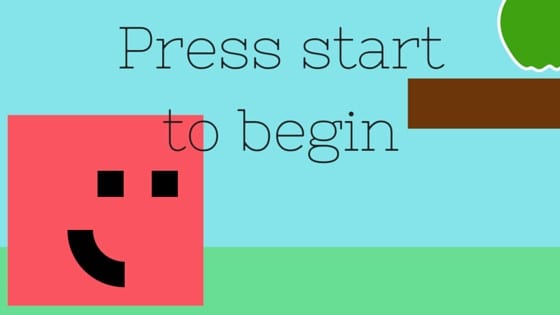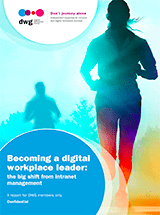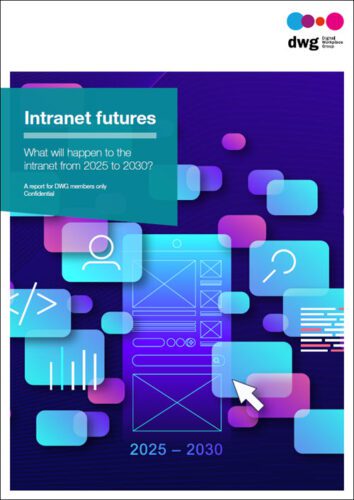7 ‘protips’ for digital workplace professionals from a video gamer

Have you heard? Video games aren’t just for kids any more; the average gamer is 35 years old. They’re not even just for men; 48% of gamers are women. And get this: they’re also not just for the lazy and unemployed; 70% of gamers are high-level executives, including CEOs. CEOs! The people in charge!
But don’t just rely on the dry stats. I know this must all be true. Because I’m neither a kid, nor male nor unemployed (nor, I concede, a CEO). And I play video games.
And, as a video gamer, a digital workplace consultant and researcher, and a lover of “combinatorial creativity”, I have a confession to make: I wish the digital workplace was more like a video game.
Don’t get me wrong. I don’t mean I wish we could trade in the hard work of creating, implementing and maintaining effective digital workplaces in favour of sitting in front of a games console all day. Okay, maybe I do. Just a tad. Maybe more than just a tad. What I really mean is: I wish the psychological and designed elements that make the best video games so rewarding and satisfying were also present in the world of digital workplaces and in our work lives in general.
Don’t take my word for it. Jane McGonigal in her book, “Reality is Broken“, says:
Although we think of computer games as virtual experiences, they do give us real agency: the opportunity to do something that feels concrete because it produces measurable results, and the power to act directly on the virtual world. And, of course, gamers are working with their hands, even if what they’re manipulating is digital data and virtual objects. Until and unless the real work world changes for the better, games… will fulfill a fundamental human need: the need to feel productive.
There are so many lessons we could take from the design of video games – and from gaming in general – that could be applied to our working lives. But, for the sake of brevity, let’s initially limit ourselves to just seven.
1. Immersive training

| I start up a new game. I’m immediately immersed in this new world. Bit by bit, I’m taught and practise the essential skills, the ground knowledge and the mechanics I need to know. And all within the environment in which I’ll be using them. But I’m safe. I can make mistakes. I can experiment. I won’t be punished. I’m being trained, but it doesn’t feel like training. It feels like the game has already started. |
Imagine joining a new organization and having your training set up as a video game. You play through different realistic scenarios that prompt you to use the different digital tools you’ll be needing once you start your work. Rather than learning about the digital workplace in a way divorced from reality, you’re immersed immediately within the digital environment, with the “what” and the “why” embedded in the training and responsive to you. IBM has, in a way, developed something similar: CityOne Game is a “serious game” that simulates a city, where you as the player have to work through various scenarios based on urban planning challenges.
What we can do now: Until we reach that point, perhaps we can look at role-playing and other creative methods of gaming digital workplace training. We could design scenarios that are true-to-life for how the tools are going to be used; provide in-platform guidance for “just-in-time” training; and really think through the maturity curve for learning: What are the basics that I need to know now?
2. Different Types of Player

| I set a level of difficulty that makes the game challenging enough for me, but not so challenging I will become disheartened and give up. As I progress, I can up the difficulty level to match my improving skills, if I so choose. In the game itself, there are different ways of playing; I can focus on developing a particular set of skills, or pursue a different set, depending on my personality. I can attempt a task beyond my current level or stick with one that will be quick and easy. Each mode of playing is equally supported, making me feel comfortable to forge my own way forward. |
As much as we’d like to think this will be the case, not everyone is going to be a model user. This was one of the lessons learned for enterprise social networks: not everyone is going to be a creator of original content – some will always prefer merely to read and comment. The great thing about a certain type of video game is that it will allow you to play according to your preferences, according to a style that suits your personality.
We’re now recognizing that the digital workplace can’t be “one size fits all”. Rather, it needs to accommodate different ways of working, different levels of ability and different preferences.
What we can do now: I’d love to see a digital workplace that allows me to set my “difficulty level”, adding or removing functionality as appropriate, and which completely supports my individual way of working. But, until we reach that point, there are already various techniques we can employ to help mould the digital workplace to the needs of different users. User research, user journeys, personas, personalization and customization are all ways in which we can “hack” the digital workplace to accommodate the different types of users that exist within organizations.
3. Main and Side Quests

| I know what my main goals are. They’re set out clearly for me right here, with detail about what I need to do next and a marker telling me where to go. The main quest is the whole point of why I’m here and must be completed. I have a sense of achievement, a sense of productivity, as I progress. But I also have the option of voluntary side quests, discovered throughout the game, which I can complete if I so choose and when I choose. |
Oh, to have a list of “quests” that I need to achieve within my work, automatically listed for me, with a marker keeping me on track with what my main task is and what my optional tasks could be. This would include brief descriptions of what I need to do and why, and pointers as to where I should go next in order to achieve these tasks.
What we can do now: We’re not quite there yet. But there are some great examples of organizations creating integrated task lists that pull in data and notifications from multiple systems. We need to start thinking about the tasks that people have to achieve within the digital workplace and delivering to them the triggers and data to help them track where they are and work out what they need to do next.
4. Supportive Communities

| I reach a point where I’m stuck. I can’t work out what to do next; how to solve a puzzle, where to go, who to speak to. I turn to a thriving online community of fellow gamers, who have faced and successfully overcome the same challenge, or who are currently working through it themselves. I am not alone. I – we – can do this. |
The passion of the gaming community in supporting each other is immense; there are whole wikis devoted to detailed walkthroughs of entire games, as well as forums where people share tips and can go for help when they’re stuck. If we take this one step further, there is a whole community dedicated to recording their own gameplay, creating an amazing visual resource for people who are stuck and need a nudge in the right direction. These are the kind of communities many organizations wish they could achieve on their own collaboration platforms and enterprise social networks.
What we can do now: We’re now at a point where there are some fantastic examples of thriving communities and collaboration wikis within organizations, through which people share their expertise and knowledge. However, too many companies are still trying to encourage this type of behaviour and yet failing. While video gaming communities tend to rely on the goodwill and intrinsic motivation of those who create the content, companies need greater planning and more intervention to prompt this kind of knowledge-sharing behaviour. Additionally, formal community management, rewards and recognition, training and governance, are all activities that can help create a thriving and supportive community, regardless of the medium.
5. Performance Feedback

| I’m constantly being given feedback about how I’m doing against a defined set of measures. I can monitor my progress on the main screen at all times while I play: here’s my health bar – it’s low, I should top up; here’s my progress towards the next level up – I’m nearly there. On my in-depth dashboard I can see how long I’ve been playing, how many achievements I have, what skills I’ve unlocked so far, what further skills I can unlock. I have all the information I need in order to be the best player I can. |
To be honest, I’m torn on this one. The idea of having data and feedback on my performance is appealing, but I’m also wary of making everything measurable and open; there’s a value, for example, in the private empty space that leads to creativity. It’s about providing data that’s useful but also actionable. Video games provide you with triggers based on performance when you need to act on them, providing more in-depth data for you to dip into if you so wish.
What we can do now: There are some great examples we’ve seen that demonstrate the impact of having a data dashboard pulling in actionable data from a multitude of sources. Deloitte US, for example, has integrated with 20 systems to bring useful HR data and processes to users. To bring this integral feature of video gaming to the digital workplace will require thinking through what data users actually need to help them manage themselves, what needs to be private to them and how this integration will be managed.
6. A sense of consequence

| I can see that my actions have consequences. If I choose to venture down this particular story path as opposed to that one, I’m exerting my agency on the game. As I make my choices, immediately and over time, I see the impact I’m having on the world around me. My choices matter. My being here matters. |
At a macro level, one of the things we hear time and again is that employees want to see how their work contributes to the wider work of their organization; they want to feel that their work is having an impact. But even on a more micro level, we want to feel that the actions we make within our digital lives are having consequences; we don’t want to feel that we’re submitting content into a black hole, never to be seen again, for example. This is what video games do spectacularly well; the feedback loops they provide are tightly designed and the best ones will make us think about the types of choices we are making.
What we can do now: There are various levels to this one. On a usability level, we need to make sure that the digital workplaces we design provide small pieces of feedback on the actions we’re taking; this could be something as simple as confirming that a preference we’ve set has been saved. However, on a high level, organizations can use their digital workplaces – and, in particular, intranets – to share top-down and grassroots stories and recognition that help drive home that the work people are doing is having an impact. This is something that Dorel Juvenile does so well through its social intranet.
7. Details that matter

| I start to notice little details of design that are making a huge difference to my gaming experience. Here are little markers on my map that help me find hidden but useful items, which are otherwise hard to see. Here are little shortcuts to the tools and locations I frequently need, saving me time. Here are little nudges of encouragement to explore and discover. I feel a sense of joy that whoever has designed this knows gamers, knows that we want familiarity and efficiency, but also want to be pushed and surprised. I feel a sense of satisfaction that whoever has designed this has done their utmost to design their game around how I like to play. And I’m the master of this world. |
The amount of care that goes into designing and developing the best video games is noticeable, particularly as it is so conspicuous by its absence when you play a game with bugs or a poor understanding of what it is that makes a game enjoyable. As a user of the digital workplace, if we really get down to it, I want to have something that’s been designed holistically, with care, around how I need and want to use it. I want the joy of being able to “hand off” between devices, of different apps integrating with each other, of having what I need where I want it, when I want it. I want the digital workplace to understand the context of what I’m doing and bring things to me.
What we can do now: We’re starting to get there, with the emergence of services such as Delve. But until we have our AI digital workplaces, there is plenty we can do to build in those little details that can make a world of difference to users. And it starts with user research, with user observation. What are the little workarounds they’ve created for themselves? What are the tasks they’re looking to complete? Can we bake these into the design of the digital workplaces we’re creating.
Drawing lessons from outside the digital workplace
So, what is the real takeaway lesson from this? Well, it’s obviously that we all need to be playing more video games! I jest, of course. As we look to build more and more effective digital workplaces, we shouldn’t limit ourselves to the traditional channels for our lessons learned. The world of video gaming is a billion dollar industry that has so far remained mostly under the radar of mainstream publications but is starting to be recognized as a serious art, technology and storytelling form. The lessons we can draw from this area are endless.
Similarly, we can look elsewhere for ideas: the publishing industry, toys, urban space planning. As we look to create the digital workplaces of the future, we should broaden our horizons and look to others to learn how to create experiences that matter. We just need to press “Start” to begin.
Related research and resources
Categorised in: Digital workplace practitioners

